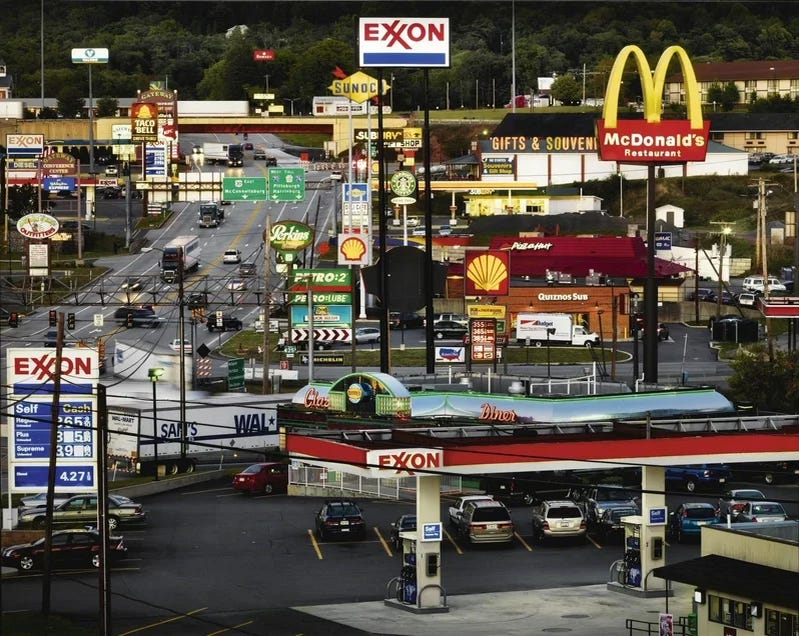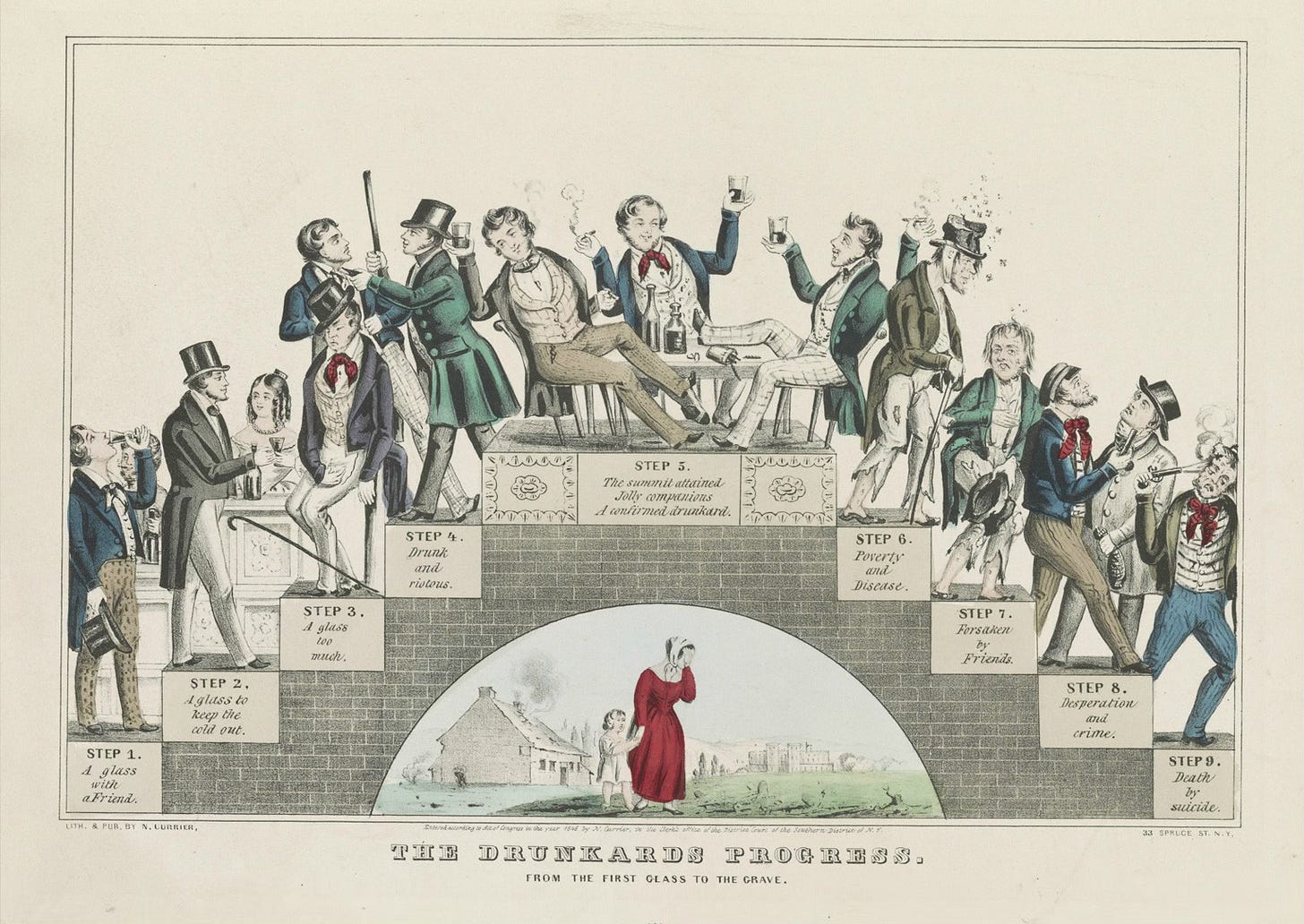Do Americans Even Want to Decarbonize?
Decarbonization needs a new Temperance Movement to work
Merry Christmas, everyone. In the spirit of the holiday, this is a “vacation” post—let’s talk vibes for a moment.
The biggest lie climate types tell is that they fail to identify how much decarbonization will cost everyday people. It’s a lie by omission, because I think a lot of us are lying to ourselves, too.
Some Gut Numbers
Let’s start with electricity. A Massachusetts electric bill is around $250/month for a normal-sized house. A full electrification package—two electric vehicles, a whole-home heat pump, a heat pump water heater—would roughly double that electric bill to $500/month.1
And let’s say we decarbonize the grid, replacing $20-40/MWh half-gas mix with $60/MWh solar, $80/MWh wind, and multi-billion-dollar storage, transmission, and distribution upgrades to manage the intermittency. That’ll double or triple the cost per kWh of electricity, turning that normal electric bill into…$1,000/month? $1,500/month?
Remember, the markup for renewable energy credits (RECs) is necessary for a lot of renewables project to pencil in the first place. Similarly, deep investment in storage and transmission is necessary to balance the reality that renewables generate when they feel like it. And total decarbonization requires policymakers to reckon with the absurdly low price of natural gas in the United States.
But that’s easy, right? Just put a tax on carbon! Or failing that, write some other regulatory scheme that places a cost on carbon that actually shifts market behavior.
But that cost of carbon ripples outward. Say we pass a $130/ton Scope 3 carbon tax on food products…2
Avocados (2ish kgCO2e/kg) would cost $0.060 more per unit. That’s a 4% increase.
Coffee (16ish kgCO2e/kg) would cost $1/more per pound. That’s an 8% increase.
Beef (35ish kgCO2e/kg) would cost $2 more per pound. That’s a 30-35% increase.
A “modest” cost of carbon would increase the price of the American diet by 10%, easily. But that doesn’t account for water use, pesticide use, soil degradation, factory farming, or the additional labor for doing things the “right” way.3
Think about how much it costs to buy organic, then add 25%. Then make everyone buy organic, and see how local farm cooperatives keep up.
Are you ready for a cup of coffee to cost double?
Are you ready for strawberries to be an April-to-June thing only?
Are you ready for meat to be a sometimes food?
And while we’re doubling your grocery bills and quadrupling your energy bills, we can’t forget the immense environmental cost of cheap clothes, of long-distance travel, of disposable containers, of consumer electronics, of two-day shipping, of wealth.
Make no mistake—this meme picture of Breezewood, Pennsylvania in 2008 is a tableau of immense wealth:
Imagine what this place was just one hundred years prior—a mid-route stopping point connected to the rest of the world by a rail line and—soon—the literal first highway across the United States. A general store, an inn, likely no running water. Pre-industrial, agrarian poverty.
Yet in this photograph, we see wealth that would make Charlemagne weep. Food for thousands, energy in abundance, a volume of trade that would rival the Silk Road in volume and reach—as a matter of course.
Yet we know this abundance comes at great cost. Are we ready to pay for it?
Don’t push this on “stupid Americans,” this is a question for you.
Are you ready to pay more for blander food?
Are you ready to pay ten bucks a gallon for gas?
Are you ready to buy less, save more, and make hard choices for a Greater Good?
Because in the 19th and early 20th century, that was a part of American culture.
The Temperance Movement
The Temperance Movement was an outgrowth of the Second Great Awakening in the United States, a rising religious fervor that birthed the Church of Latter-Day Saints and Jehovah’s Witnesses, but also spread Baptist, Methodist, and Presbyterian teachings. This Awakening made serious demands of people to perfect themselves, to work hard for others’ gain, to taking loving thy neighbor extremely seriously. It motivated political efforts from prison reform to women’s suffrage to the abolition of slavery…to the reduction of alcohol consumption.
Remember, American Prohibition was a constitutional amendment. That required a 2/3rds vote in the House, a 2/3rds vote in the Senate, and a 2/3rds vote in three-quarters of all state legislatures. Banning the consumption of something as fun, cool, culturally significant, and lucrative as alcohol was popular on a now-unimaginable scale.
Temperance was core to the American national character between, say, the Panic of 1873 and the atom bomb. Work hard. Save money. Invest that money in something big. See the nation, the world, as a great machine. Play your part as a cog, nameless yet important. Do it for the United States. Do it for your family. Do it for God.
These were the people who converted the United States from an agrarian backwater to the world’s first superpower.
Decarbonizing the planet is a yet greater feat, and we have even less time.
This is a Matter of National Character
Short of deploying some miracle technology, decarbonizing the United States is likely impossible, because most Americans will not pay to live up to their values. The people most invested in decarbonization, who buy solar panels and electric vehicles and “sustainable” lifestyle products, use their “reduced” carbon footprint as an elite status signal.4
In a vacuum, that’s fine. If you care about 1.5°C, that’s insufficient. But the American political and cultural elite5 who bang the loudest drums on climate have decided that our fellow Americans are mere animals too addled by fast food, diesel fumes, and racism to serve anything but themselves. And so the only plans I’ve seen for decarbonization involve some combination of mandates, social engineering, unproven technology, and wishful accounting.
But Americans do have a history of stout frugality, of plain-shirted moralism, of the idealism to choose one’s own fate tempered by the pragmatism of living with those choices. We have a history of paying for our values.
If you—like me—are a Liberal Coastal Elite, and you think the country needs to do something at least as hard as banning alcohol, then you need to do your part to shape American culture into something that could pull off such a feat again.
Freedom is actually expensive.
Lead by example, and pay up.
This post and the information presented are intended for informational purposes only. The views expressed herein are the author’s alone and do not reflect those of their current or previous employers or any elected officials. The author makes no recommendations toward any electric utility, regulatory body, or other organization. While certain information contained herein has been obtained from sources believed to be reliable, the author has not independently verified this information, and its accuracy and completeness cannot be guaranteed. Accordingly, no representation or warranty, express or implied, is made as to, and no reliance should be placed on, the fairness, accuracy, timeliness or completeness of this information. The author assumes no liability for this information and no obligation to update the information or analysis contained herein in the future.
Before you talk about fossil fuel savings, the cost per unit heat for a heat pump is higher than for a gas boiler.
These are gut numbers based on loose Google searches.
As of 2022, barely more than 1% of the American workforce worked in agriculture—in a country that’s a net food exporter. Factory farming enables this low labor utilization per unit labor.
Your single biggest energy use is space heating and cooling. This means the single best thing you can do for the climate is to halve the square footage per person of your household. Downsize your house by half, or move your parents and in-laws in. Your reusable tote bags are a rounding error in comparison.
Like me



